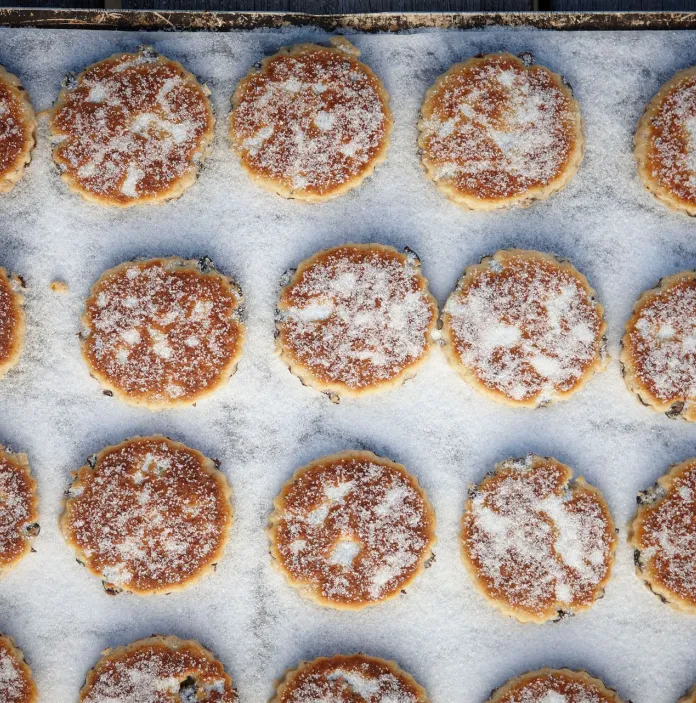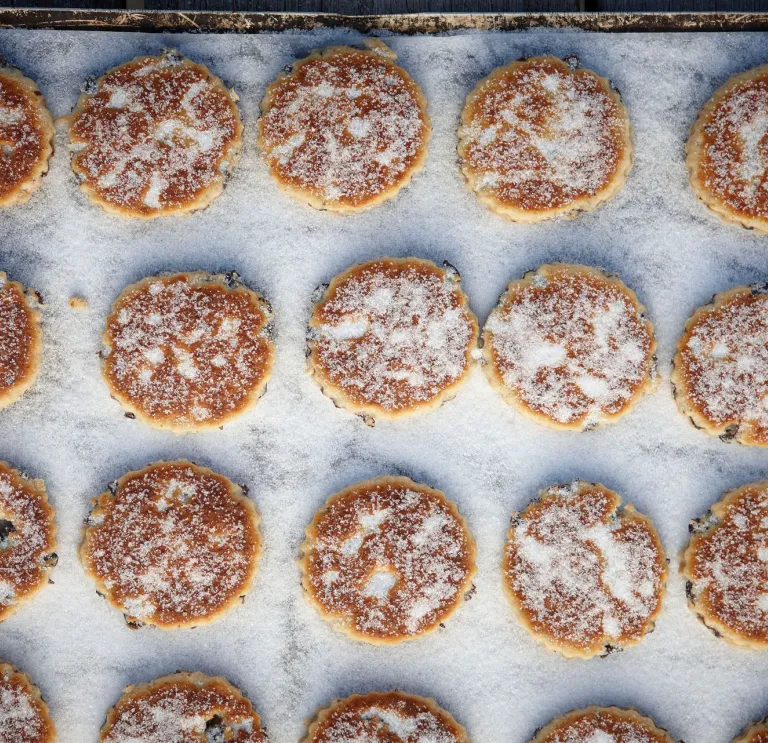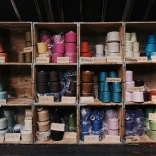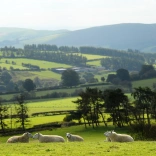The most iconic of all Welsh teatime treats, a round, sugar-dusted Welsh cake makes the perfect accompaniment to a good cuppa, and is sure to brighten even the cloudiest of Welsh winter days.
Welsh cakes have been favourites in most parts of Wales since at least the late 19th century, where they were baked on a griddle over an open fire. The various regional names for this cooking utensil traditionally gave the little cake its name, meaning they could be called tishan lechwan or cacenni cri, before falling into the umbrella title of Welsh cake, as they are known and marketed today.
Traditional sweet Welsh cakes are made with sultanas, but more creative combinations can range from chocolate chips, cinnamon and orange zest.
When is it eaten?
Any time is a good time for a Welsh cake. They’re perfect for an afternoon break with a cup of tea, but also traditionally formed the sweet portion of a miner’s lunch, stowed safely in their food boxes. A Welsh cake also serves as a central part of any half-decent St David’s Day feast, the de facto national day of Wales, celebrated on March 1.

How to make Welsh cakes
Serves: 10-12 cakes | Prep time: 10 minutes | Cook time: 4-5 minutes each
Ingredients
220g self raising flour
55g caster sugar
110g margarine or butter
1 or 2 handfuls of sultanas
1 or 2 free-range eggs depending on mixture
Method
Step 1: Sieve the flour into a bowl, then add margarine or butter and rub finely together.
Step 2: Add sugar and sultanas and mix.
Step 3: Add 1 egg and mix. The consistency needs to be bound together, so if too dry add another egg.
Step 4: Roll out on a floured board so that the mixture is about a quarter of an inch thick.
Step 5: Using a circular cutter of around 5cm in diameter, cut the mixture into circles, then cook on a greased pan, or bake stone, on a medium heat for about 4 to 5 minutes each side.
Step 6: The exact cooking length will depend on what you are cooking your Welsh cakes on, but keep a close eye – too short a period and they won’t be cooked in the middle, too long and they will be dry. When touched during cooking they should feel springy, but not wet to the touch (no mixture should come out of the middle).
Step 7: Once cooked, dust with caster sugar and enjoy.
This recipe was created by baker Kathryn Gunter. Kathryn was born in Abergavenny and ran a traditional bakery in the town’s market, often providing tourists with their first experience of sampling a proper Welsh cake, amongst other Welsh delicacies.




